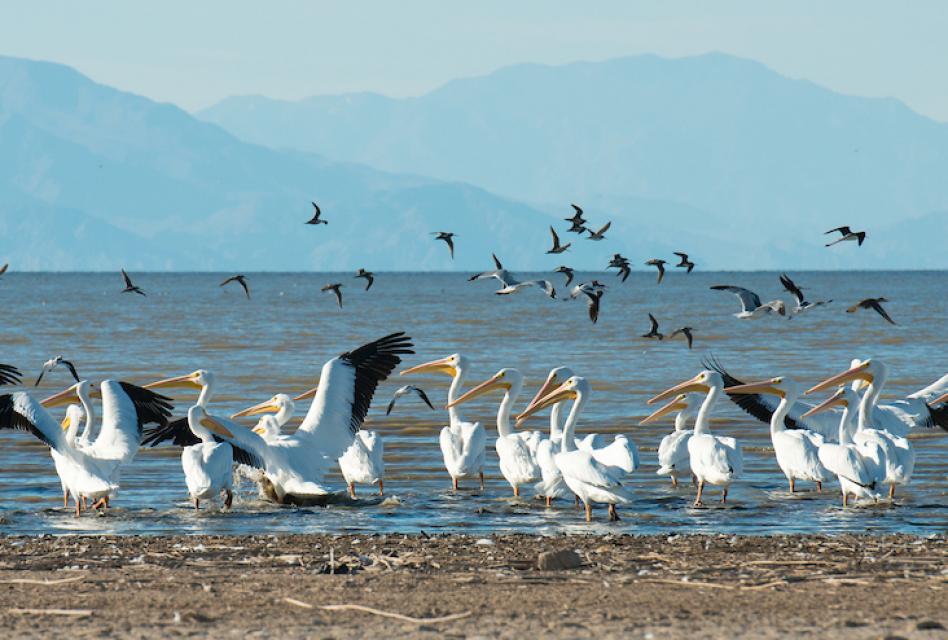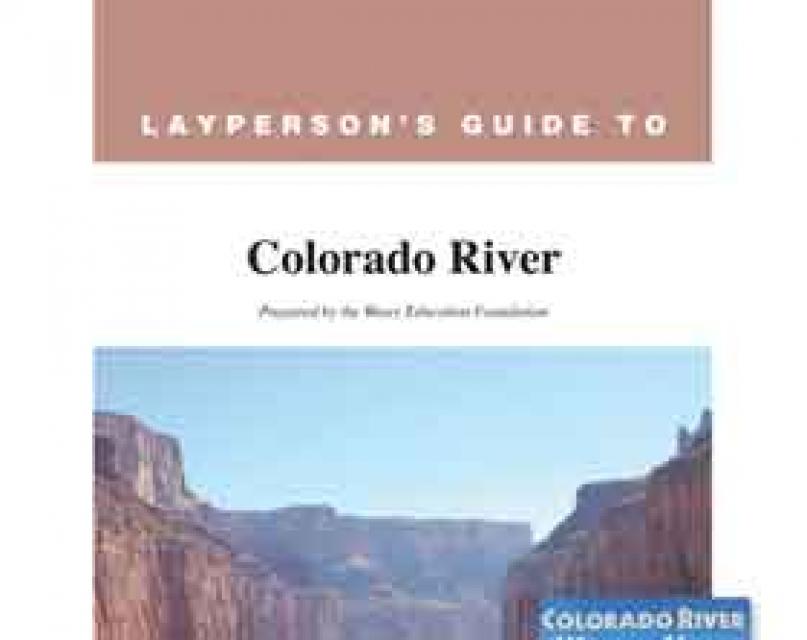Long Criticized For Inaction At Salton Sea, California Says It’s All-in On Effort To Preserve State’s Largest Lake
Read Our Western Water Notebook, Water Word of the Day and Don't-Miss Water Reads From Across the West
Dear Western Water readers:
 The Salton Sea in California’s far
southeast corner has challenged policymakers and local agencies
alike to save the desert lake – a vital stop for migrating
birds – from becoming a fetid, hyper-saline water body
inhospitable to wildlife and surrounded by clouds of choking
dust.
The Salton Sea in California’s far
southeast corner has challenged policymakers and local agencies
alike to save the desert lake – a vital stop for migrating
birds – from becoming a fetid, hyper-saline water body
inhospitable to wildlife and surrounded by clouds of choking
dust.
The state of California, long derided for its failure to act in the past, says it is now moving full-bore to address the sea’s problems, with ambitious plans for wildlife habitat expansion and dust suppression.
Western Water’s Gary Pitzer talks with officials in charge of the effort as well as skeptics who want the state to move faster at the sea to re-establish species habitat and mitigate blowing dust. Read the full story here.
Water Around the West
Five don’t-miss articles from around California and the West:
Farmland values hinge on future water availability: Ching Lee, reporting for AgAlert, explores how availability of water and the impact of the Sustainable Groundwater Management Act are a main focus when agricultural appraisers determine California land values, particularly in water-short regions.
In parched Southwest, warm spring renews threat of ‘megadrought‘: Writing in The New York Times, Henry Fountain explains how the Southwest’s heat and dryness has been so persistent that some researchers say the Colorado River Basin is now caught up in a historic megadrought like those that occurred during the past 1,200 years and lasted 40 years or longer.
A big rat in Congress helped California farmers in their war against invasive species: InsideClimate News’ Abby Weiss writes about new legislation that would expand nutria eradication efforts to about a dozen states, including California. If enacted, the legislation would provide $12 million for nutria eradication, and California would receive a substantial portion of that sum.
The burning question: How do wildfires impact watersheds? Writing in envirobites, Jeannie Wilkening notes that understanding processes happening within watersheds and how they could be affected by fires is important since changes to these processes affect water supplies, both for communities that lie within the bounds of the watershed as well as communities further downstream.
Green infrastructure can be cheaper, more effective than dams: E&E News’ Daniel Cusick reports that hundreds of studies on nature-based solutions to extreme events show that “green infrastructure” is often cheaper and more effective than engineered projects like dams, levees and sea walls.
Water Word of the Day
 The Quantification
Settlement Agreement (QSA), signed in 2003, defined
the rights to a portion of Colorado River water for four Southern
California water agencies and laid the foundation for the
nation’s largest farm to urban water transfer. The QSA came in
response to California consistently using more than its annual
Colorado River entitlement of 4.4 million acre-feet. You can
learn more about the QSA and other water-related issues in
Aquapedia, our free,
vetted online water encyclopedia.
The Quantification
Settlement Agreement (QSA), signed in 2003, defined
the rights to a portion of Colorado River water for four Southern
California water agencies and laid the foundation for the
nation’s largest farm to urban water transfer. The QSA came in
response to California consistently using more than its annual
Colorado River entitlement of 4.4 million acre-feet. You can
learn more about the QSA and other water-related issues in
Aquapedia, our free,
vetted online water encyclopedia.
At the Foundation
Our Headwaters Tour is going virtual next month with an exclusive video that takes viewers across the upper watershed of a major Sierra-fed river to learn the important role forests play in California’s water supply. The Aug. 6 tour will include a live Q&A with speakers who are on the front lines of addressing challenges in our forests — climate change, reduced snowpack, overcrowded forests and wildfires. Learn more about this virtual tour and how you can join it here.
Water Academy
 The Colorado River provides water to
about 40 million people and 4 million acres of farmland in a
region encompassing some 246,000 square miles in the southwestern
United States. Our 32-page Layperson’s Guide
to the Colorado River covers the history of the
river’s development; negotiations over division of its water; the
components of the Law of the River and a chronology of
significant Colorado River events. Other issues discussed include
Indian water rights, the recent efforts to draft comprehensive,
collaborative solutions to the river’s future water supply-demand
shortfall and efforts to restore the environment. Here’s where to
get your
copy.
The Colorado River provides water to
about 40 million people and 4 million acres of farmland in a
region encompassing some 246,000 square miles in the southwestern
United States. Our 32-page Layperson’s Guide
to the Colorado River covers the history of the
river’s development; negotiations over division of its water; the
components of the Law of the River and a chronology of
significant Colorado River events. Other issues discussed include
Indian water rights, the recent efforts to draft comprehensive,
collaborative solutions to the river’s future water supply-demand
shortfall and efforts to restore the environment. Here’s where to
get your
copy.








